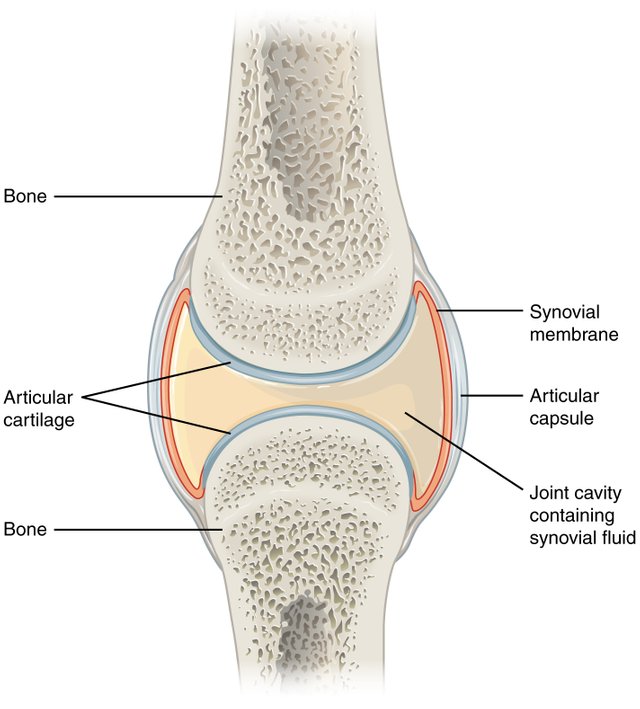As I delve into the blogosphere, or whatever the blog world is called, I figured I would start off with the most obvious, debated and controversial topic within the Chiropractic Profession, the spinal manipulation/adjustment or “cracking bones.” This can be performed by a trained Doctor of Chiropractic, Osteopathic Doctor or a Doctor of Physical Therapy. Most of the time, Chiropractors are the most trained and most likely to perform a manipulation but some DO's and PT's go through extra training to perform it as well. Before considering Chiropractic as a potential career path, my only experience with the profession was in an episode of the Simpson’s where Homer kept throwing people onto a garbage can to “crack their back”. Realistically, this probably isn’t the best look for the profession, but at least the people got better. So what is that cracking sound? It is actually just gas leaving the synovial fluid of the joint. Below is a picture of the standard structure of a synovial type joint.

Examples of a synovial type joint are the elbow, knee, toes, hips, shoulders and the Facet Joints in the spine. As pictured above, between the two bone surface’s is a synovial capsule filled with fluid. Sometimes the joint can get a little “locked up” leading to a decrease in your range of motion or movement. This issue is often called a joint restriction. Sometime’s a patient experiencing this may describe a stiffness, where they just feel off, locked up or like it needs to pop. Of course, not all pain is the same and can have numerous causes.
Now, the manipulation is when the Physician restores range of motion to that joint with a quick small thrust. This can lead to a pop as the joint capsule expands changing the pressure and releasing some gas from within it. Sometimes there can be adhesions in the capsule so it may take more than one manipulations to restore proper range of motion, however, most of the manipulation results are for short term relief or for overall wellness. It is just one tool in the trained Physicians toolbox, with proper activity modification and active rehabilitative exercises being the most supported for long term success.
Conditions that I will often use the spinal manipulation for are Facet Syndrome, SI joint dysfunction, Lumbar Disc Derangement, Degenerative Disc Disease and any joint that is having mobility issues. It can also have some success with Disc Herniations depending on your movement preferences. If you have any of these issues, or any musculoskeletal pain in general, make sure you see a qualified provider who does a thorough exam before they get rack'n and crack'n. Not all low back pain is the same, and not all will benefit from the manipulation.